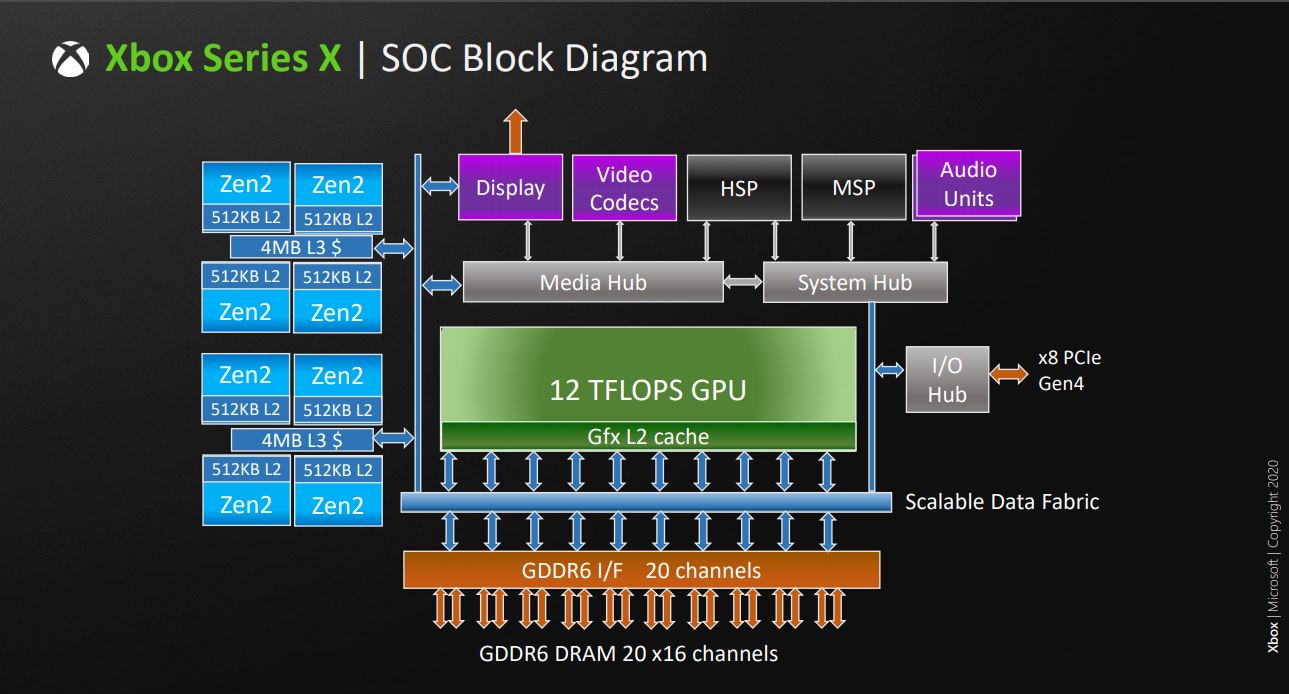Microsoft Xbox Series X's AMD Architecture Deep Dive at Hot Chips 2020
AMD's next-gen console APUs come out of hiding.
Today at Hot Chips 2020, Microsoft will detail more of the internals of the Xbox Series X system architecture. Much of the information in the pre-published presentation covers details we already knew, but with the new slides in hand, there are some additional juicy morsels inside, including a diagram of the processor die. We have the full slide deck at the end of this article, but let's quickly hit a few of the highlights.
Starting off with a bang, while we've known Xbox Series X would have an 8-core/16-thread Zen 2 CPU and a 52 CU GPU, this is the first time we've seen the full die shot. That GPU section is, not surprisingly, massive. The full chip is 360.4mm square, with 15.3 billion transistors. Doing some quick image analysis, the GPU takes up roughly half of the die (47.5% if you want a more precise estimate).
Considering everything stuffed into the silicon, the die size is actually pretty manageable. A Zen 2 CPU chiplet measures 74mm square (with four times the L3 cache compared to the Xbox Series X APU), and then tack on a GPU that has more features and shader cores than Navi 10 (RX 5700 XT), which measures 251mm square. That's 325mm square without the enhanced Navi 2x cores and 12 additional CUs. Alternatively, it's over twice as big as AMD's Renoir APU, which measures 156mm square.
Taking a closer gander at the die shot, it looks as though the full chip includes up to 56 CUs. (Feel free to correct us, as counting these things can be a bit tricky.) That's because with a relatively large die, yields of functional chips can be greatly improved by building in some redundancy. If our counting is accurate, it suggests AMD and Microsoft have only disabled 4 of the dual-CU clusters, and of course all eight of the CPU clusters have to work in order to get a functioning chip.
The presentation also takes some times to discuss the decreased difficulties in chip scaling relative to Moore's Law. While the chip size of the Xbox Series X is in line with previous console hardware (375mm square for the Xbox One in 2013, 367mm square for the Xbox One X in 2017), and transistor counts have more than doubled relative to the Xbox One X (6.6 billion to 15.4 billion), the die cost is higher. Microsoft doesn't specify how much higher, but lists "$" as the cost on the Xbox One and Xbox One S, "$+" for the Xbox One X, and "$++" for the Xbox Series X. As we've noted elsewhere, while TSMC's 7nm lithography is proving potent, the cost per wafer is substantially higher than at 12nm.
Microsoft also provided additional details on the Velocity architecture and its motivation. The Velocity architecture deals with using lower cost SSD storage in place of increasing system memory. In the past, the price for DRAM decreased by 30% each year, but for the past 8.5 years it has been dropping at 5% per year. Flash memory in contrast has continued to decline in price by 23% each year over the same period.
Because SSDs are so much faster than the spinning platters used in HDDs for the previous consoles, there's a huge benefit in game load times. Combined with the sampler feedback streaming, the hardware is able to leverage the flash memory for improved overall performance without the need to massively increase the amount of DRAM.
Get Tom's Hardware's best news and in-depth reviews, straight to your inbox.

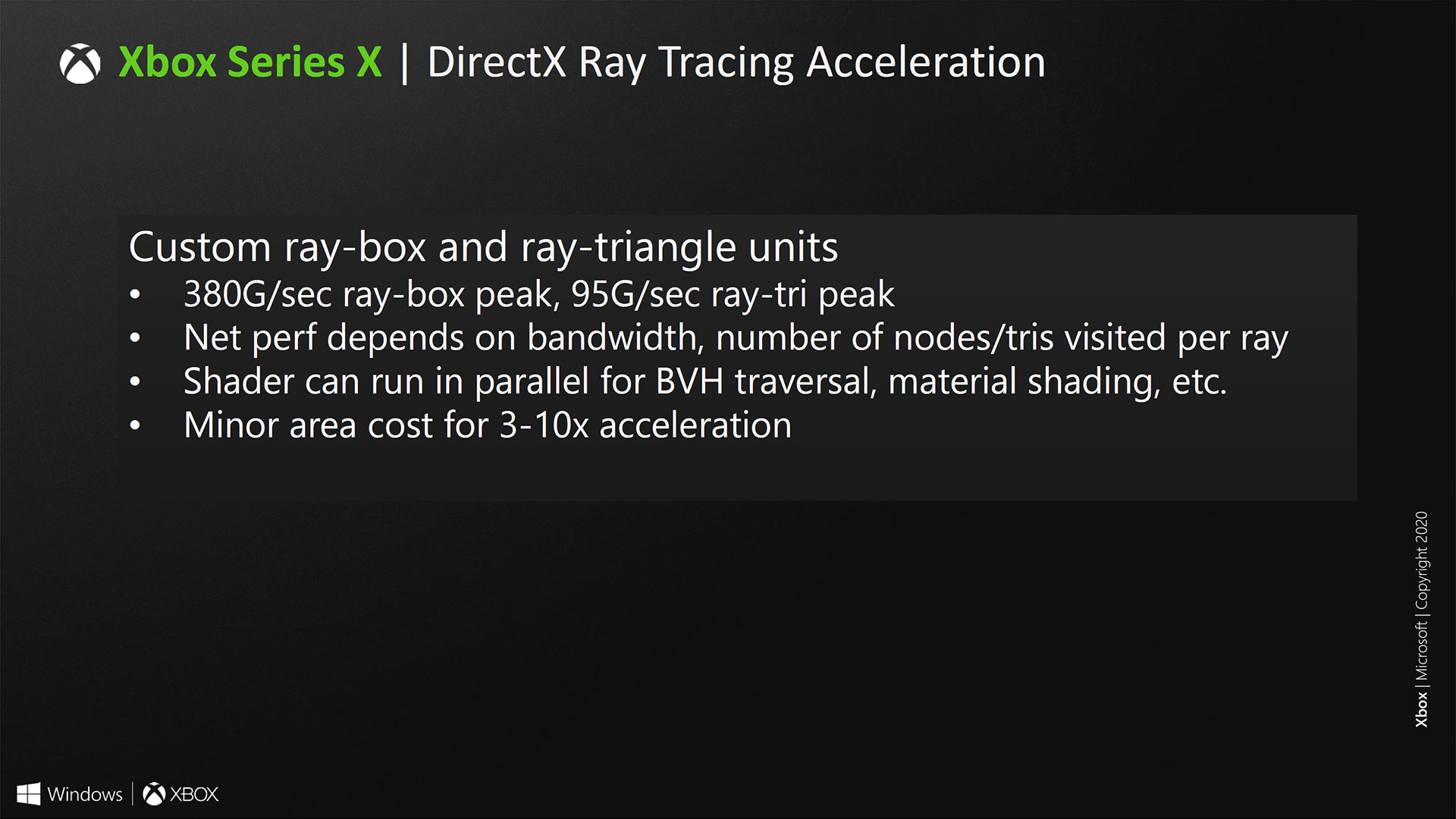

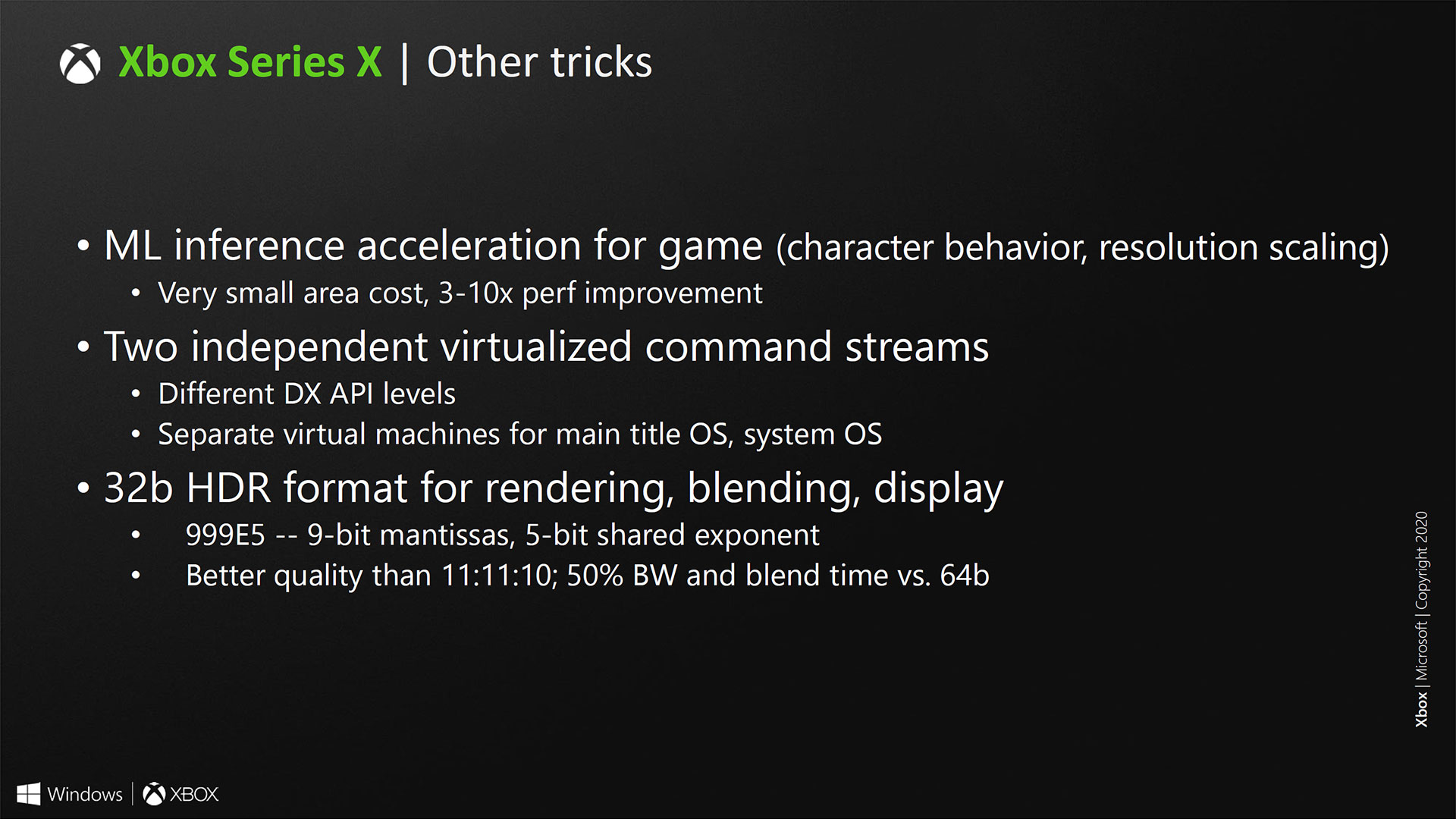
One of the more interesting new aspects of the next-generation consoles is ray tracing support. We've known both the Xbox Series X and PlayStation 5 would support hardware ray tracing, but we didn't have any clear indication of what level of performance to expect until now. Microsoft at least appears to be downplaying the importance of using ray tracing in games, or at least that's our interpretation. It emphasizes the hybrid rendering approach, much as Nvidia's RTX cards have done, noting it's "not a complete replacement" for traditional rendering methods.
As far as ray tracing performance goes. Microsoft only gives peak performance of 380G/sec ray-box calculations, and 95G/sec ray-triangle calculations. How does that compare with Nvidia's RTX 20-series hardware, where it claimed the RTX 2080 Ti could do 11 Gigarays/sec? We don't really know, as Nvidia didn't give peak performance and Microsoft didn't give typical performance.
The slide does note that it was only a "minor area cost for 3-10x acceleration." That seems relatively similar to what we've seen from Nvidia's hardware. In games that combine ray tracing with traditional rendering, running with ray tracing enabled on Nvidia's RTX 2060 is often two or three times as fast as the previous generation GTX 1080 Ti.
We still don't have concrete details on whether the Xbox Series X will have any additional hardware related to machine learning, for example like Nvidia's Tensor cores that are used for DLSS 2.0. The slides do mention Machine Learning Acceleration, and note an "ML inference acceleration" of 3-10x for a small die area cost, but that could be via FP16 or INT8 calculations run on the CU clusters.
Wrapping things up (for now), the Xbox Series X will support HDMI 2.1 output, allowing for 120 Hz 4K output, or even 8K60. There's no DisplayPort output, not that it was expected, but that does limit the capabilities if you were hoping to hook the console up to a monitor, even one of the best gaming monitors.
The video encoder/decoder also has support for 4K and 8K AVC and HEVC/VP9 decoding, with AVC (H.264) and HEVC (H.265) encoding support. That should allow for improved streaming capabilities for anyone that wants to broadcast their latest gaming exploits.
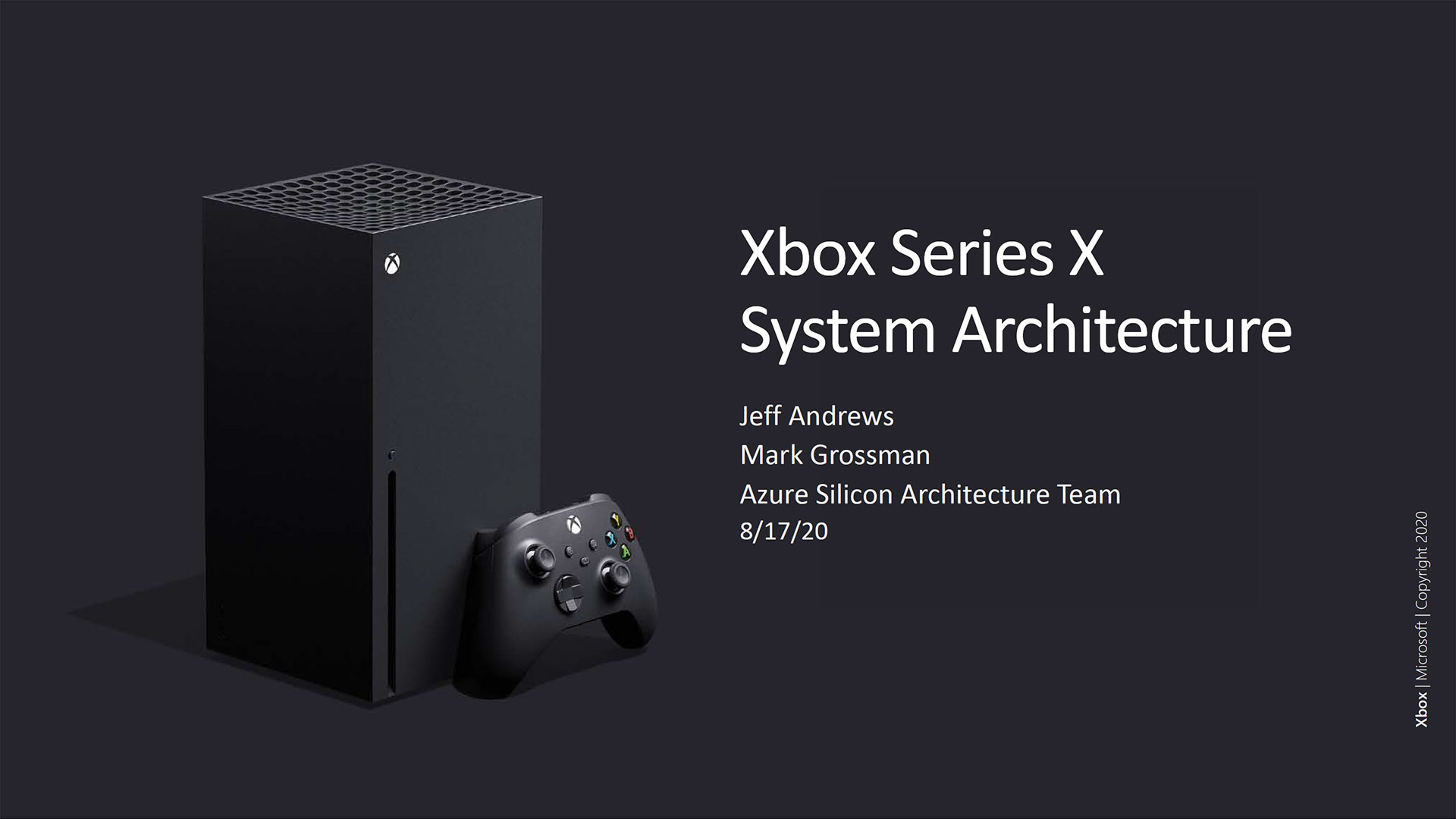

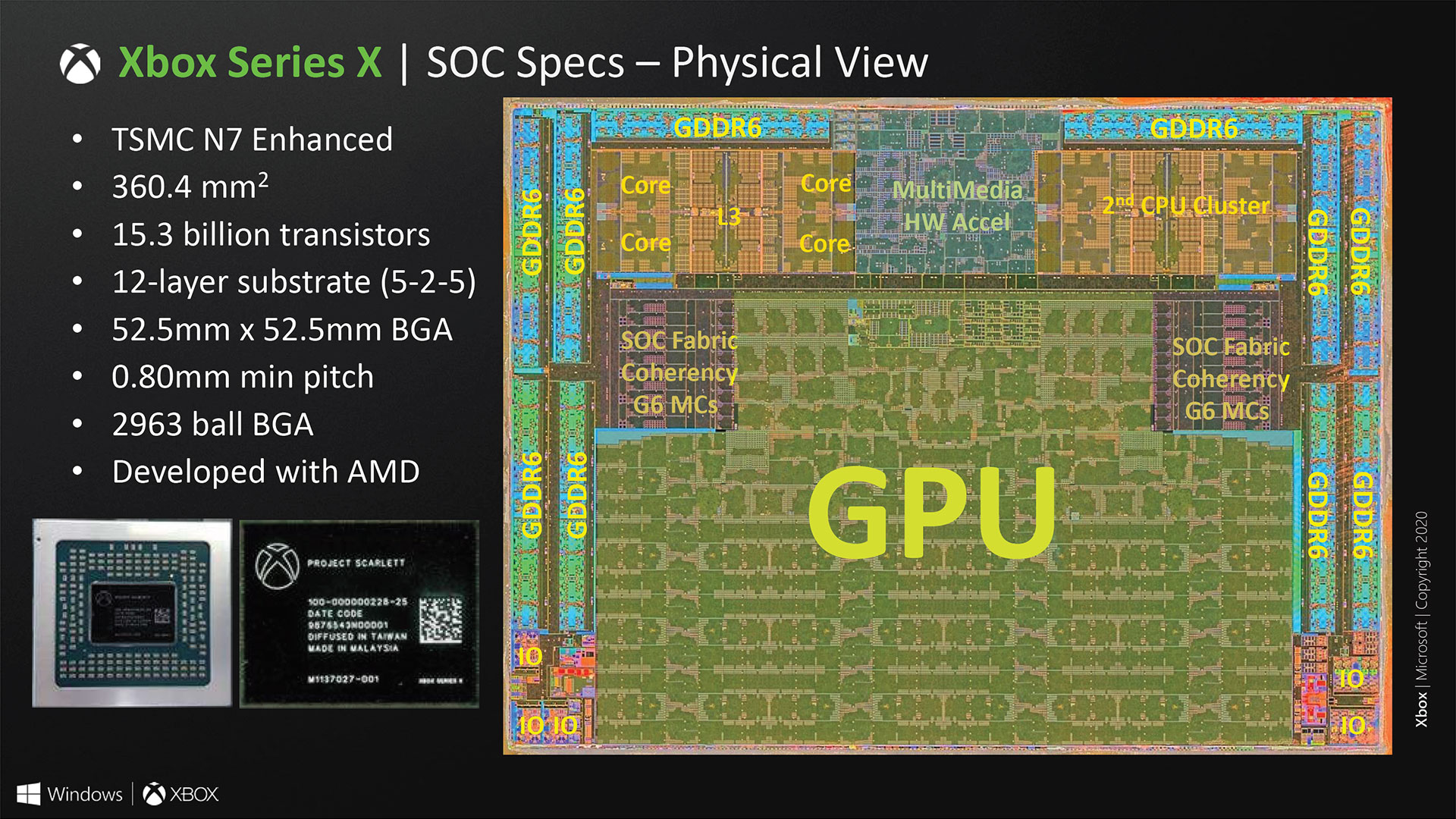
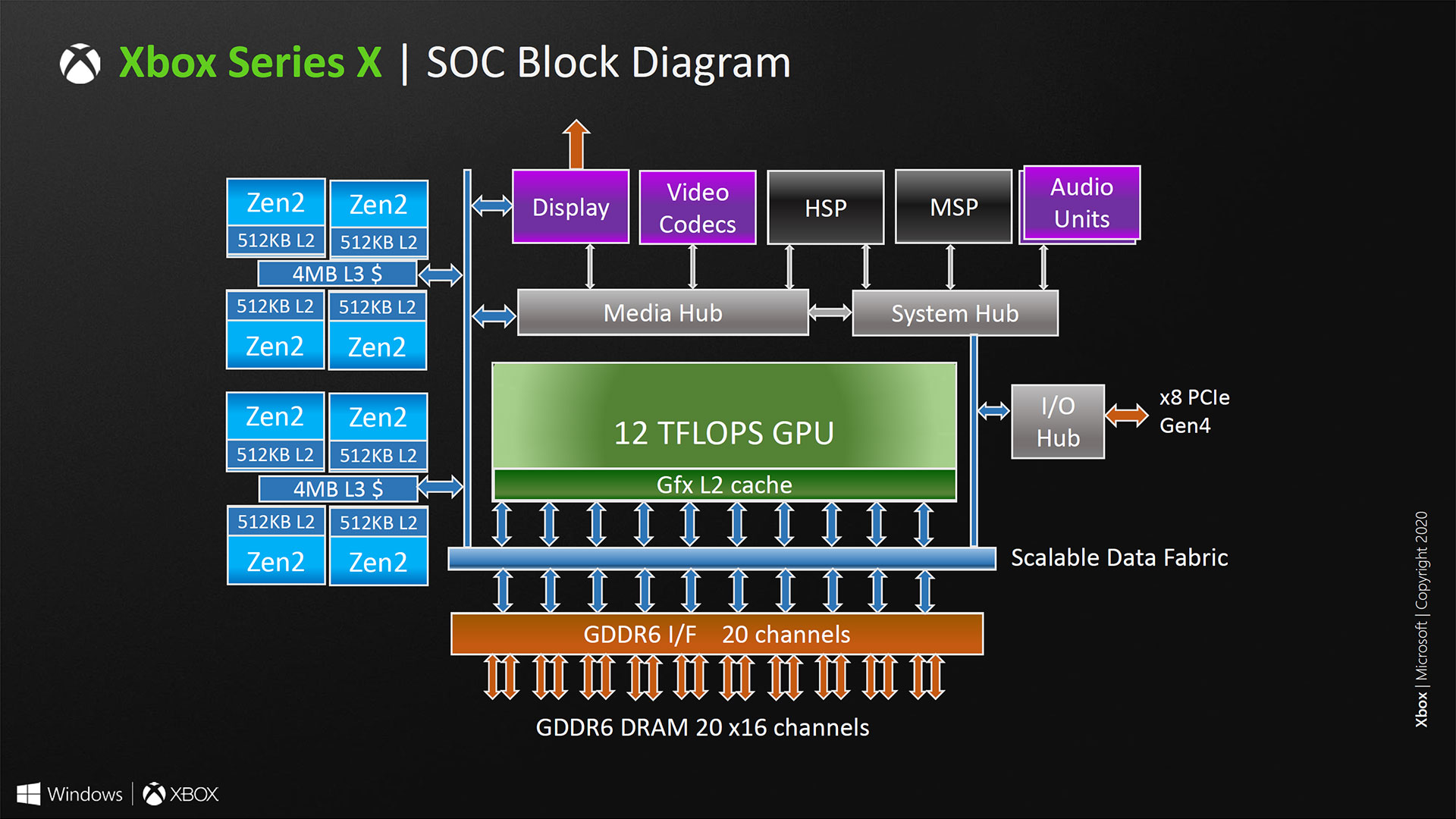

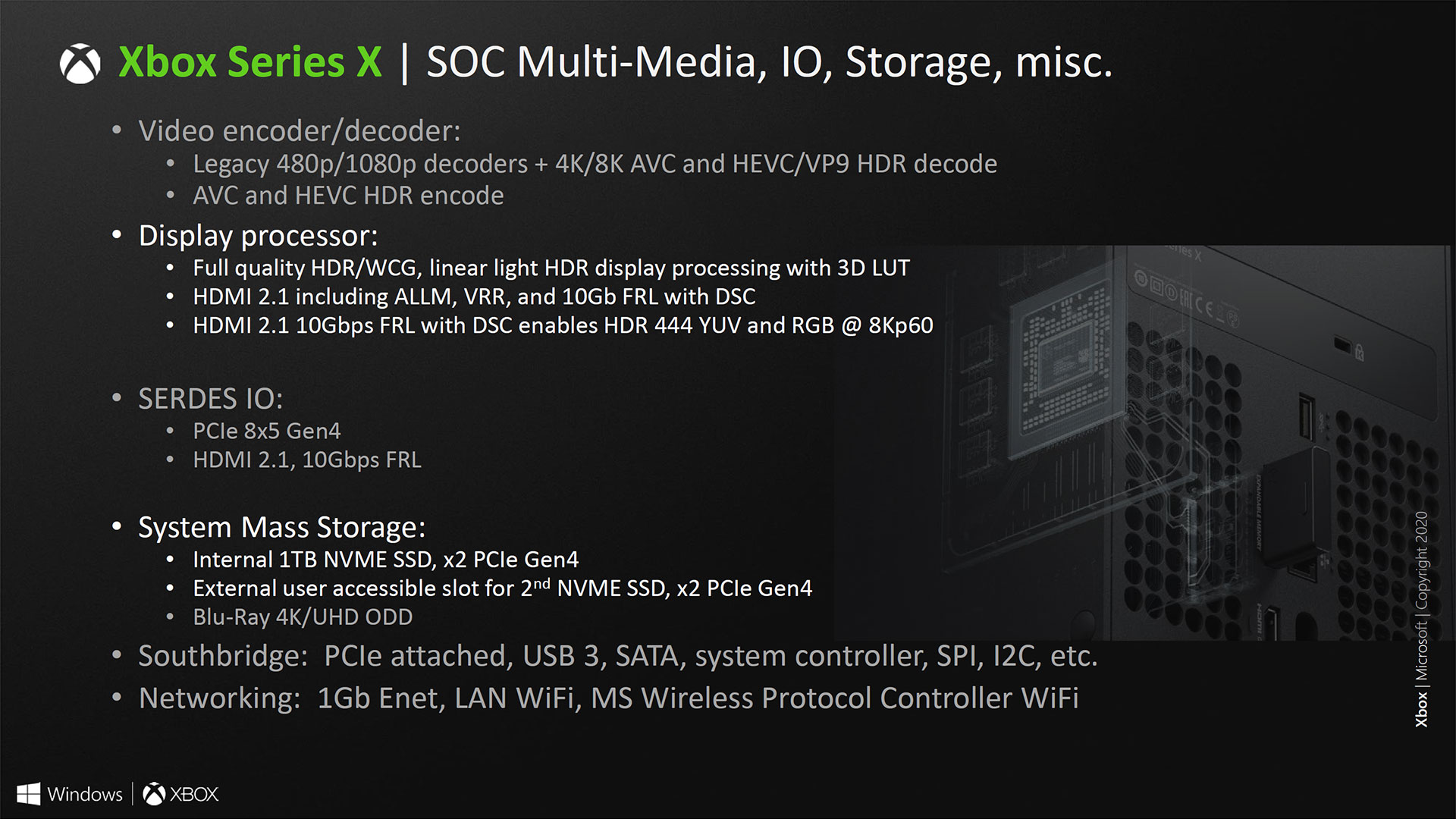
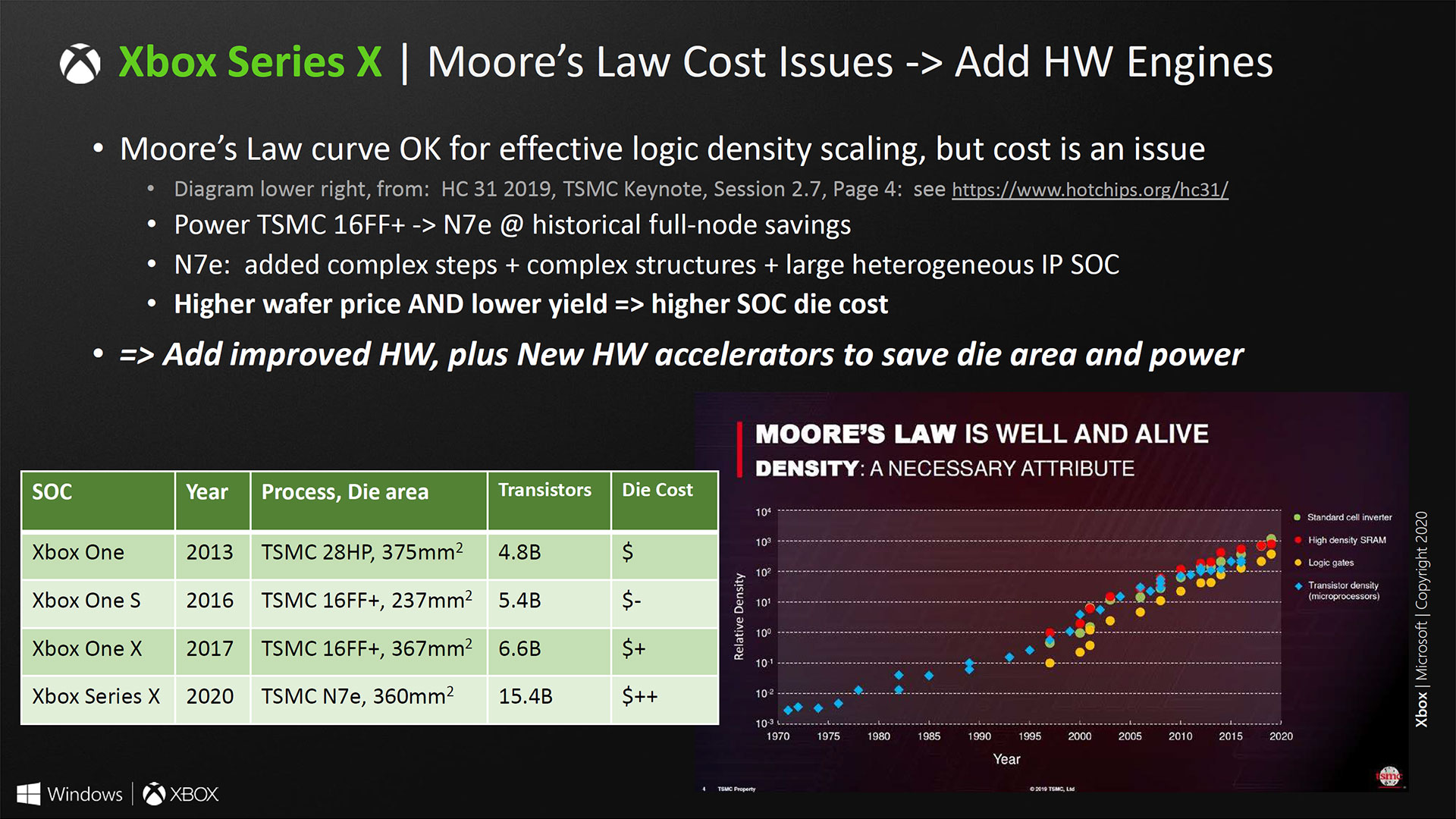
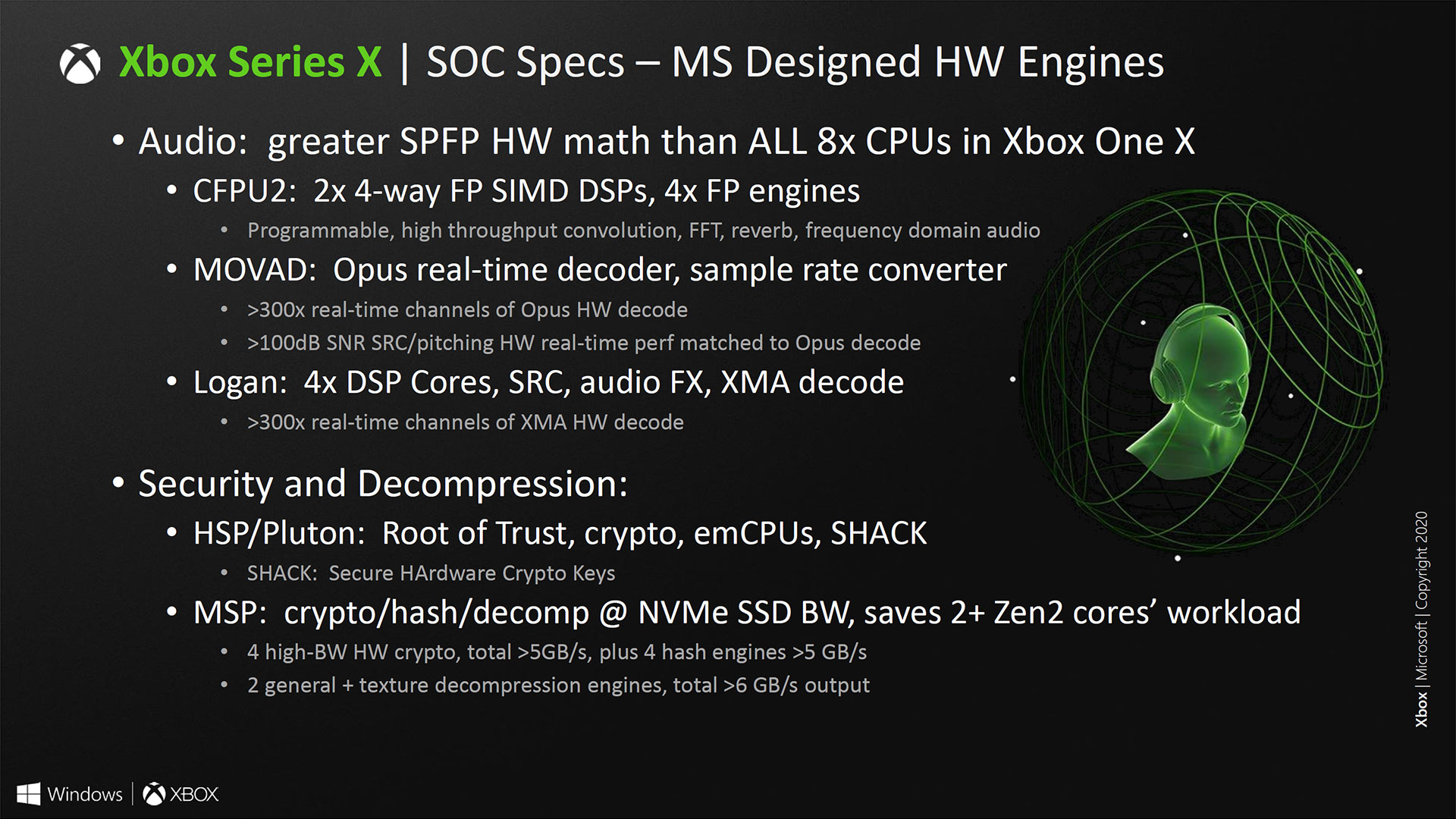
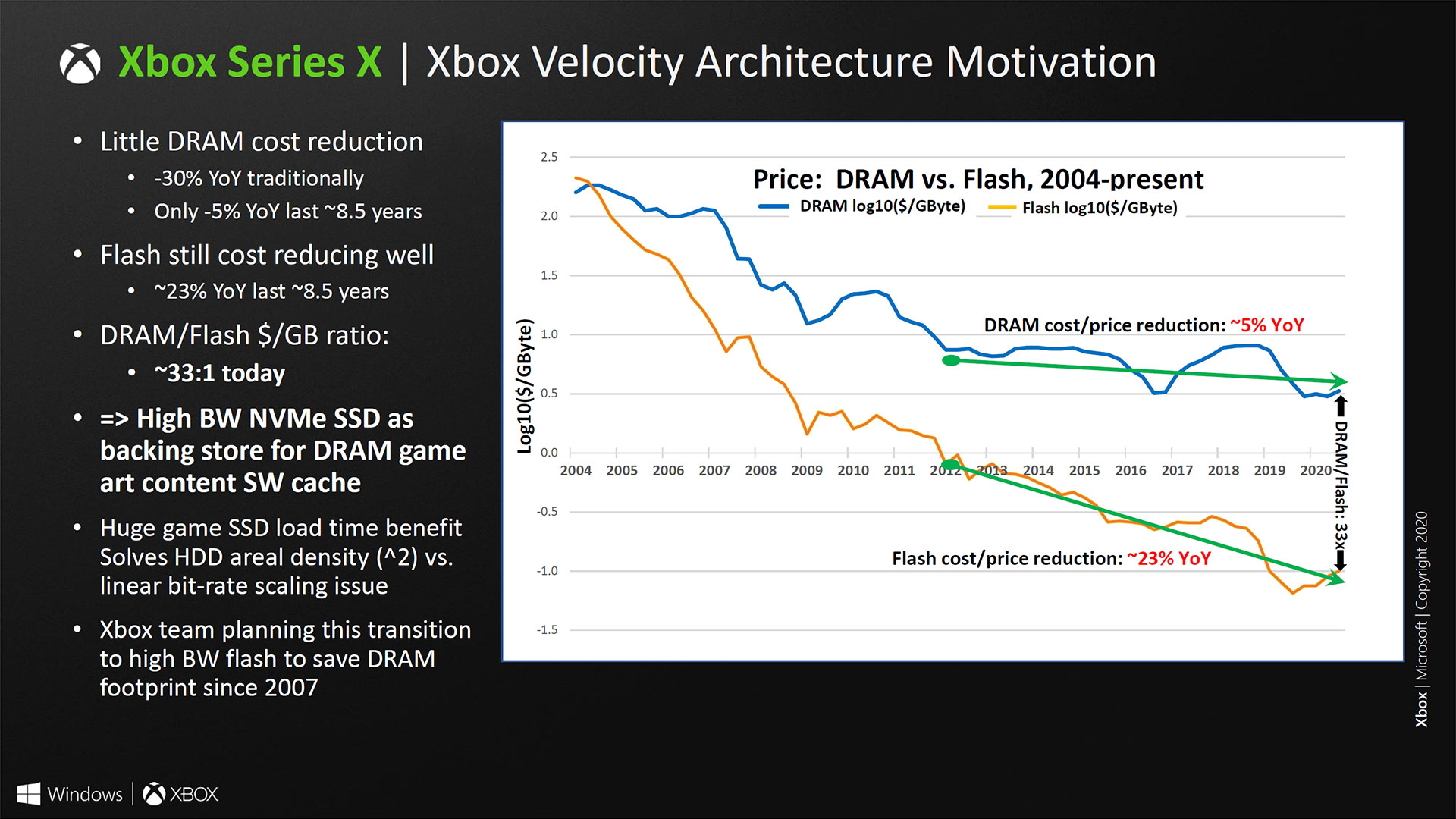
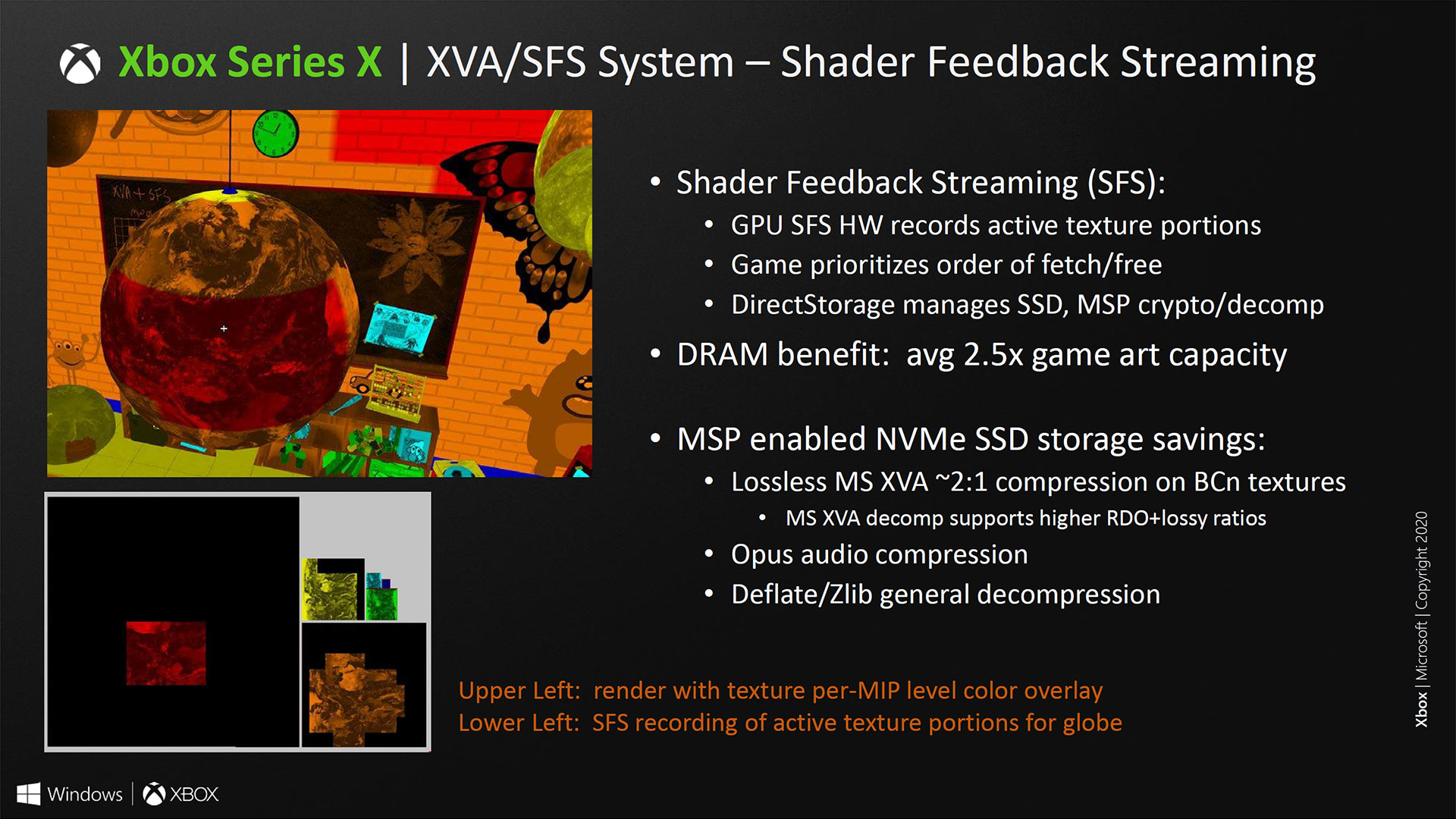

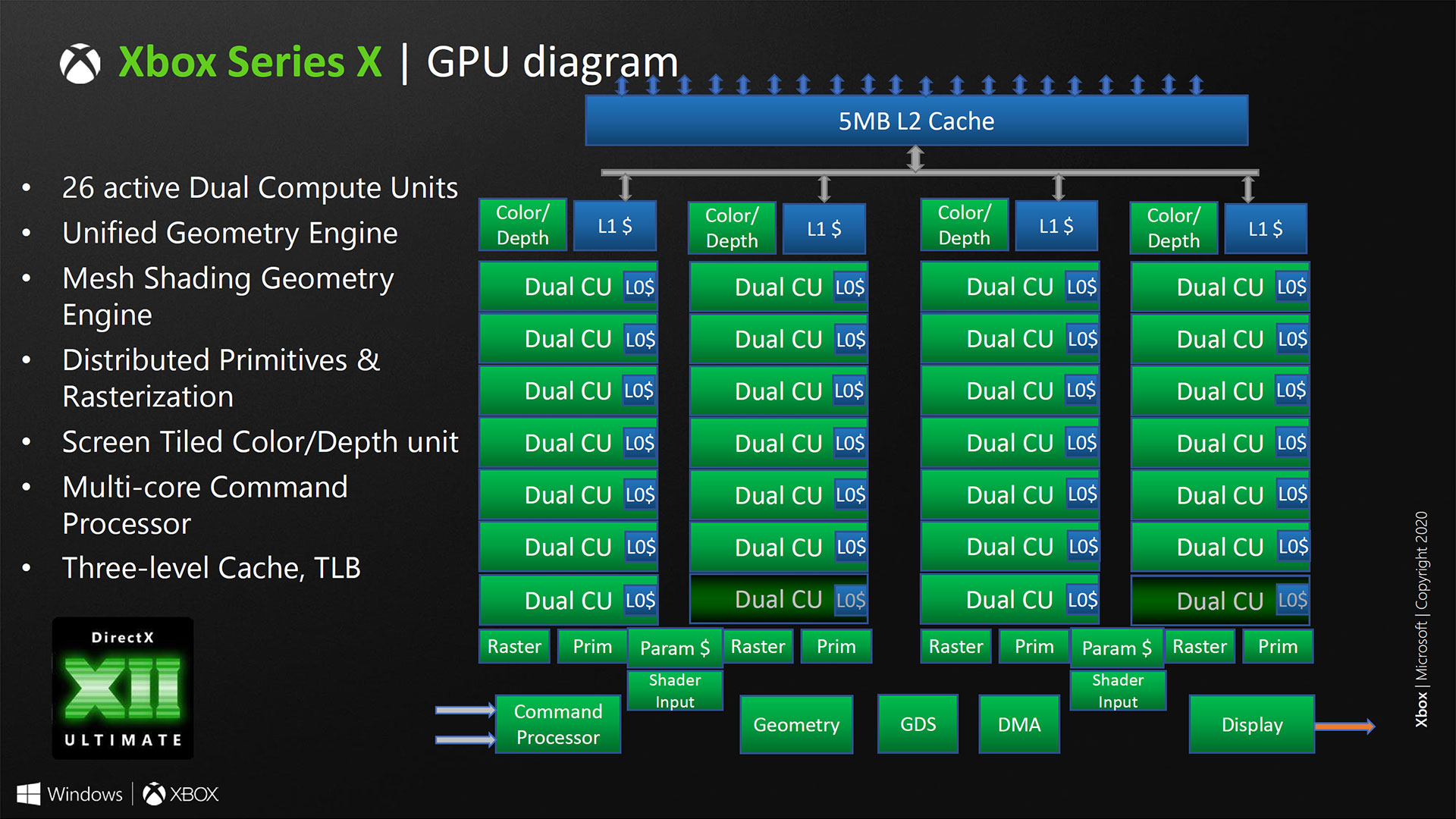

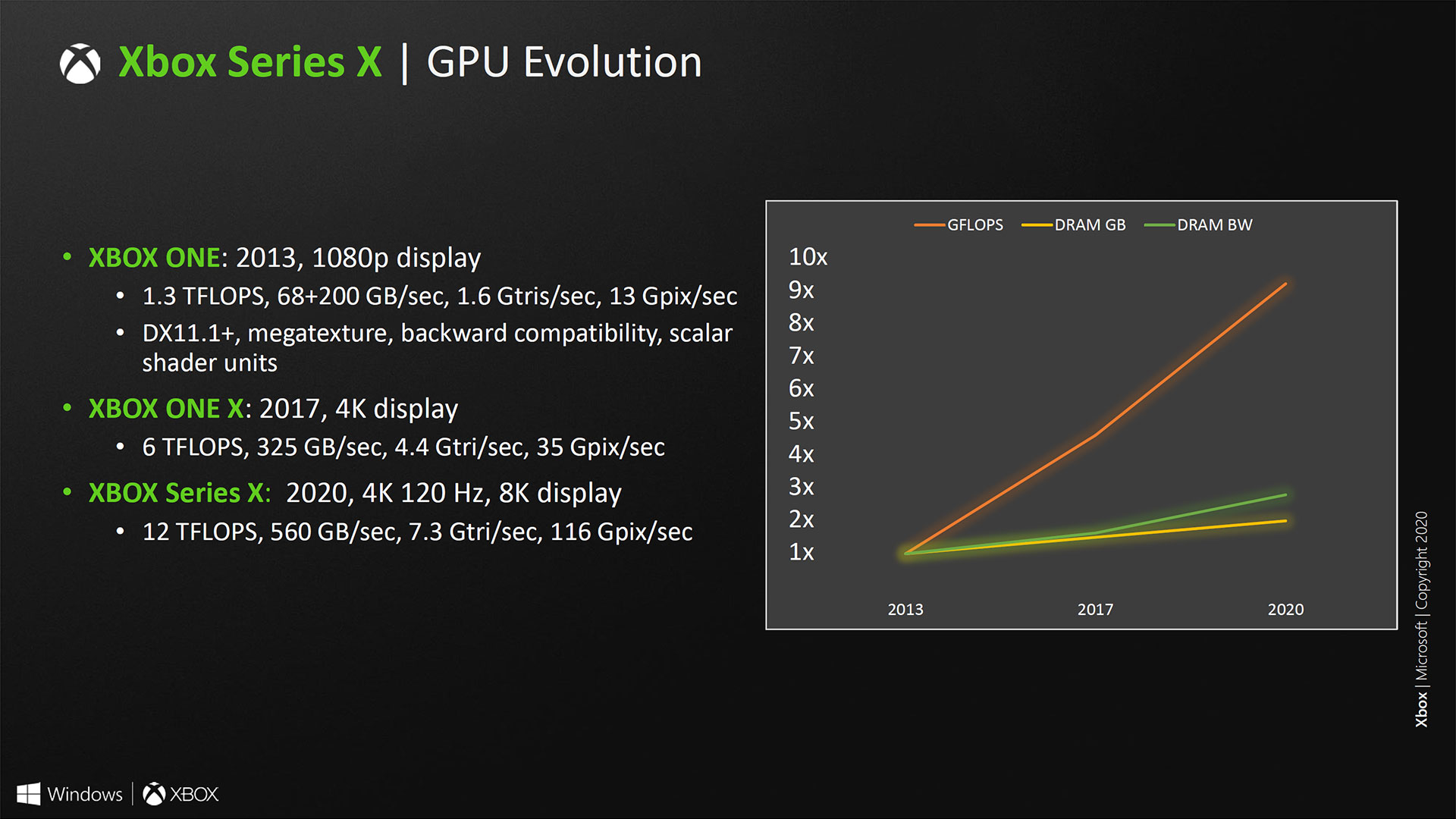
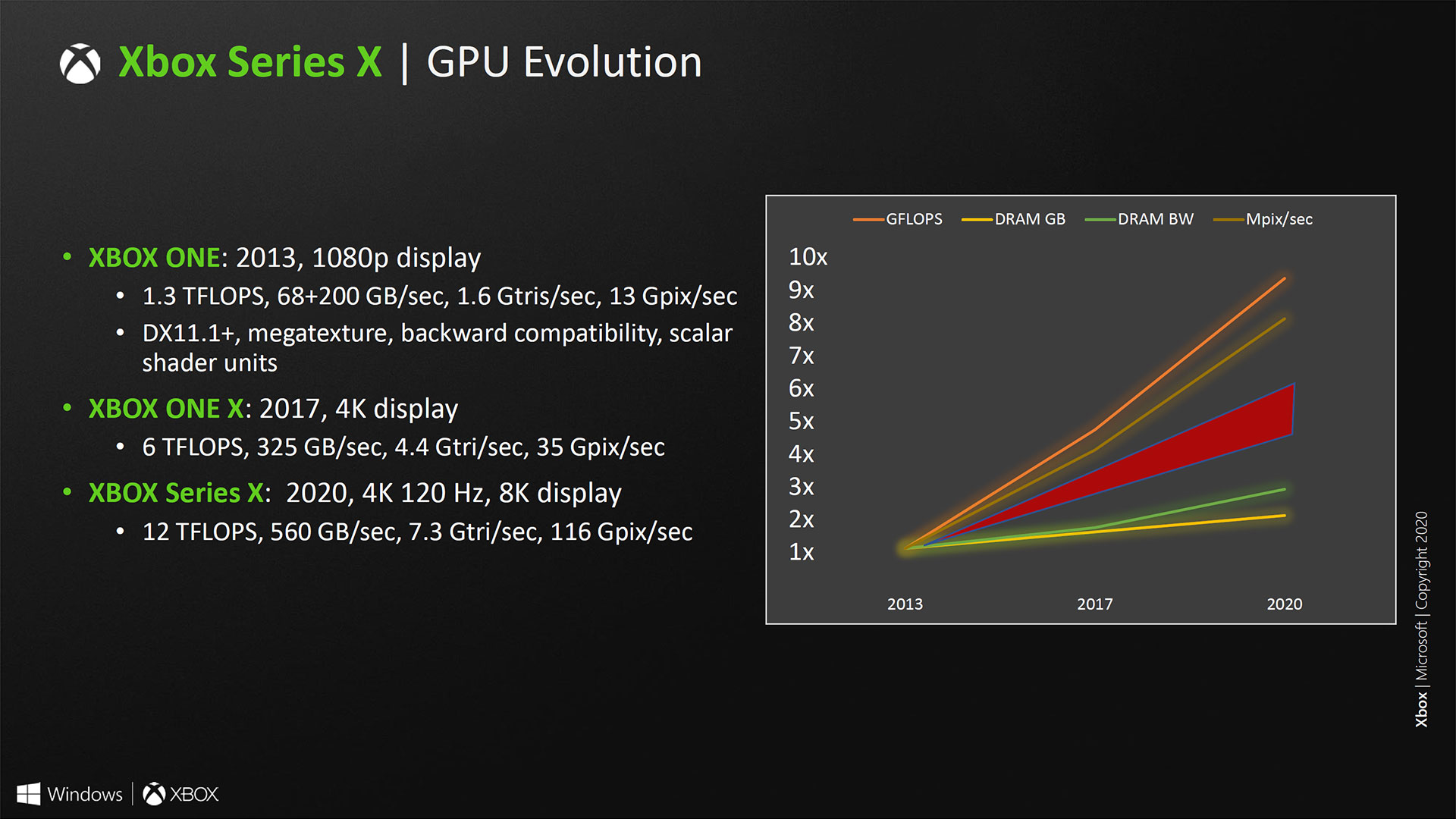

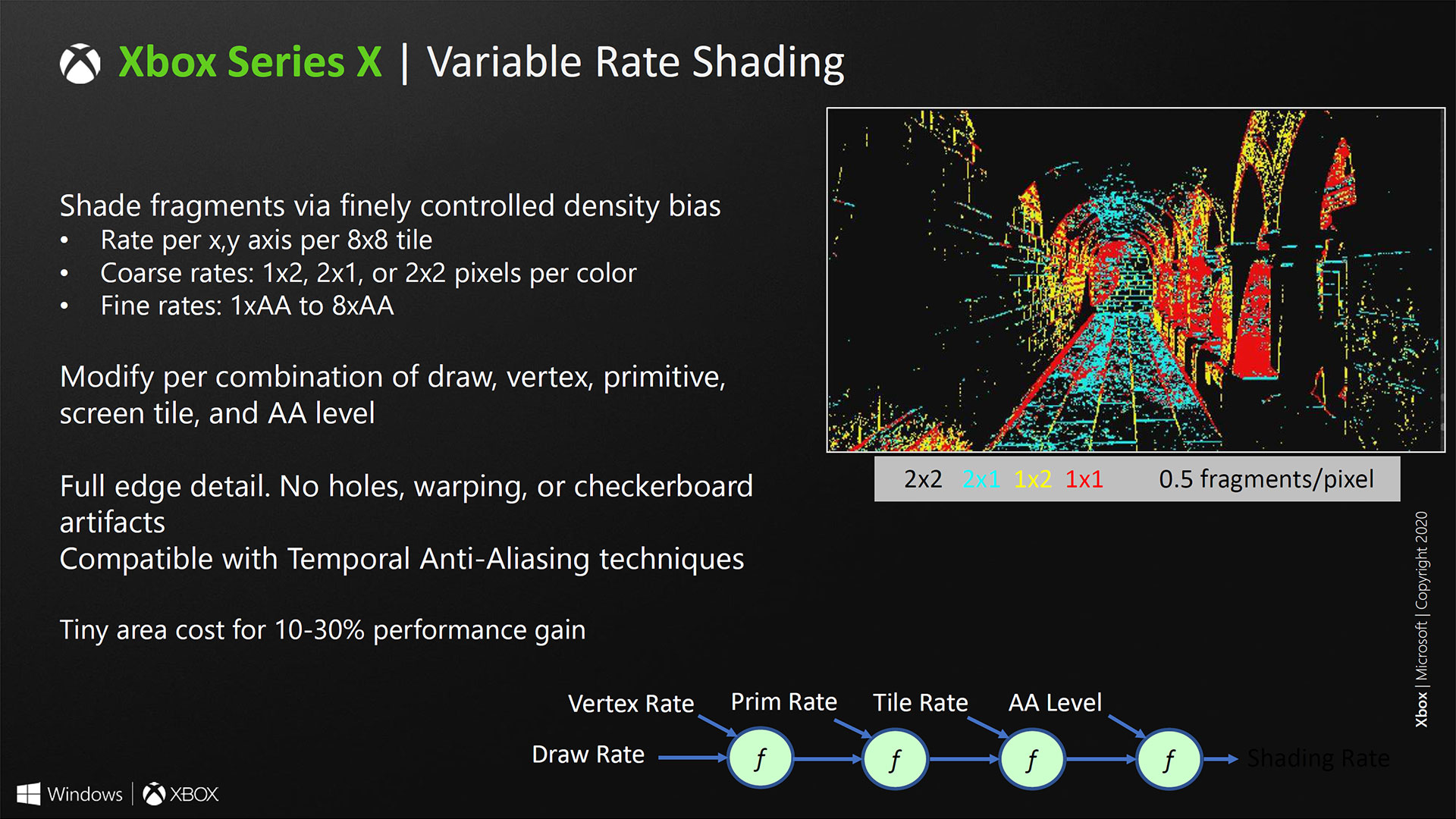
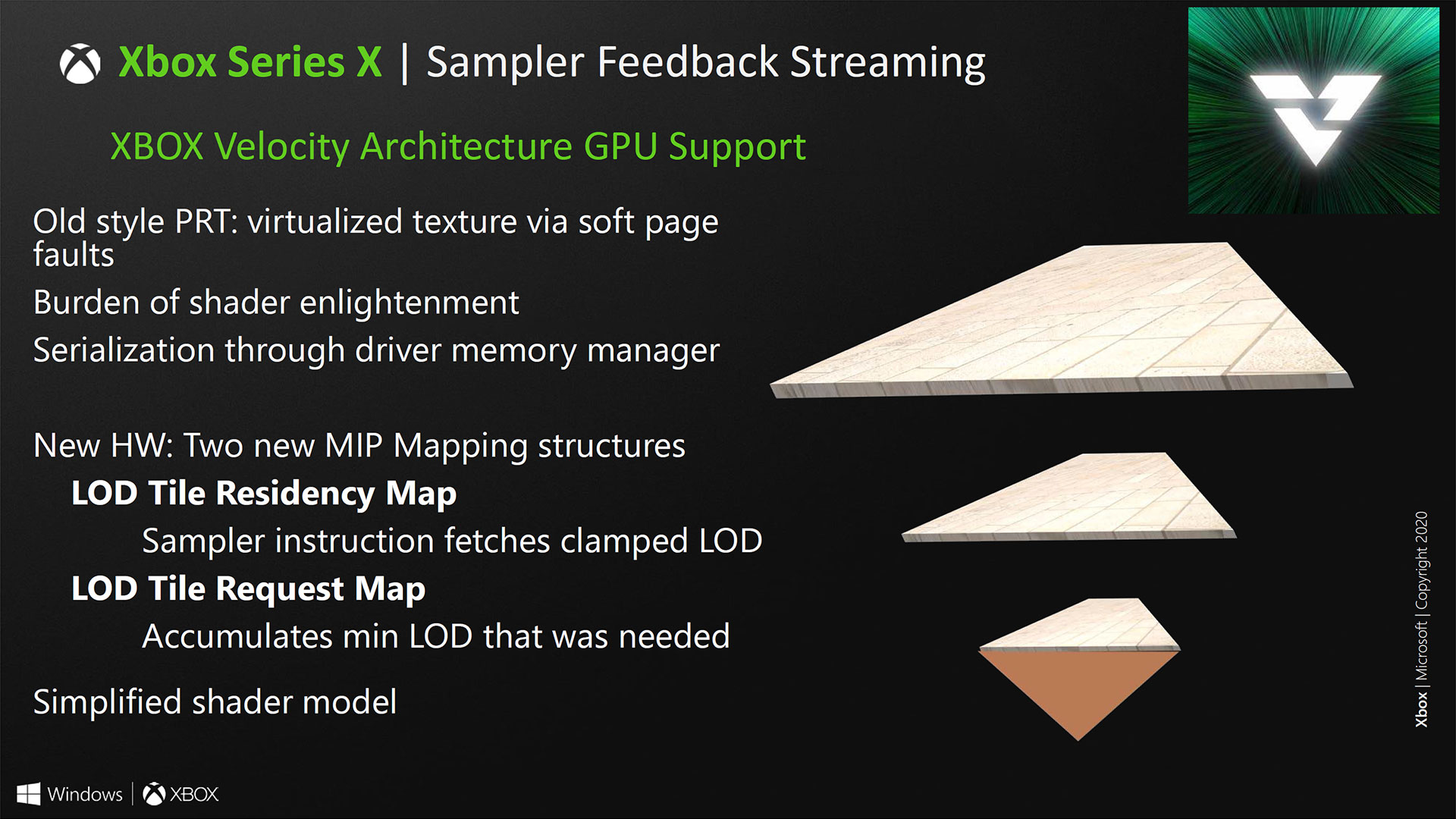
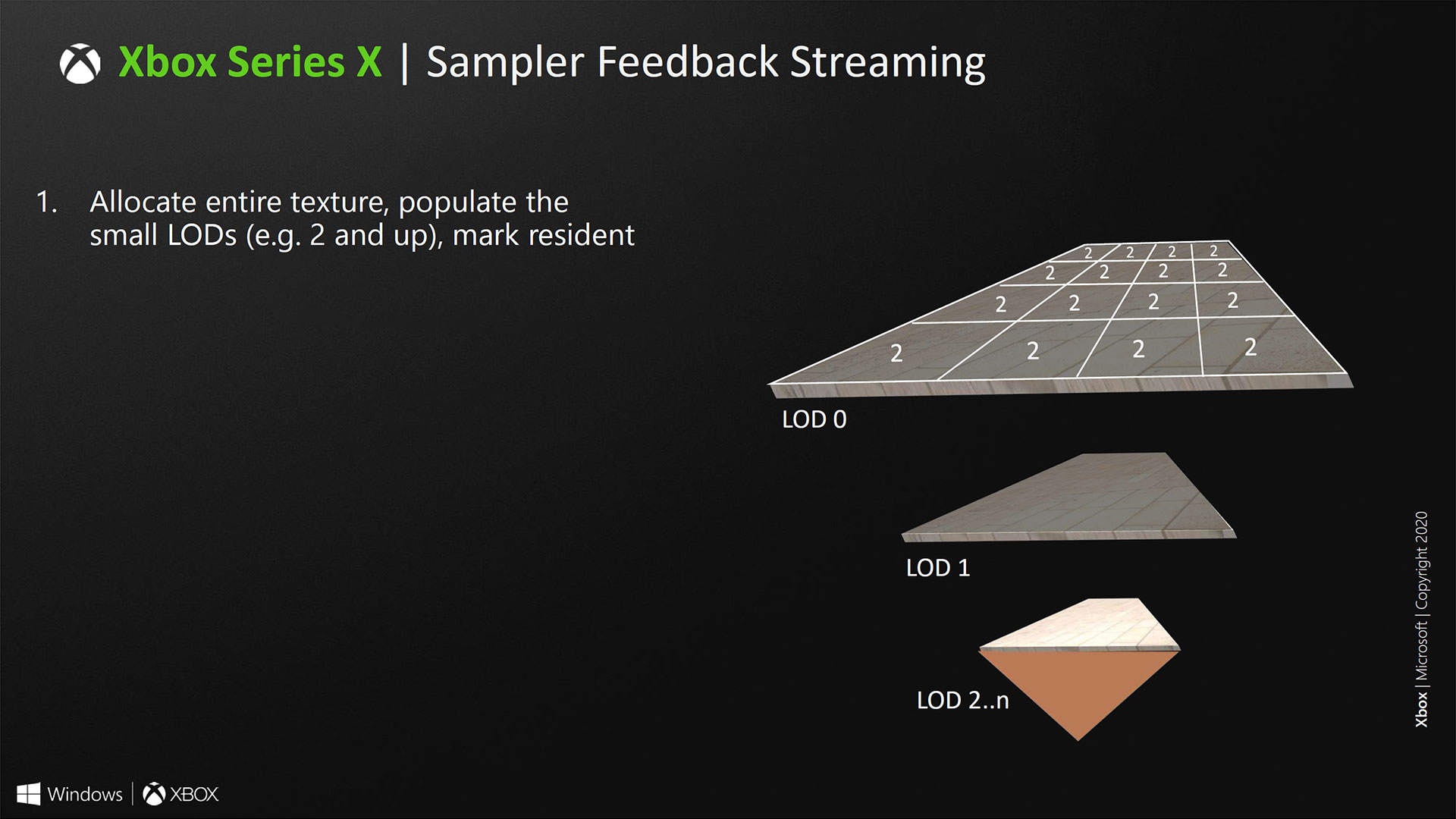

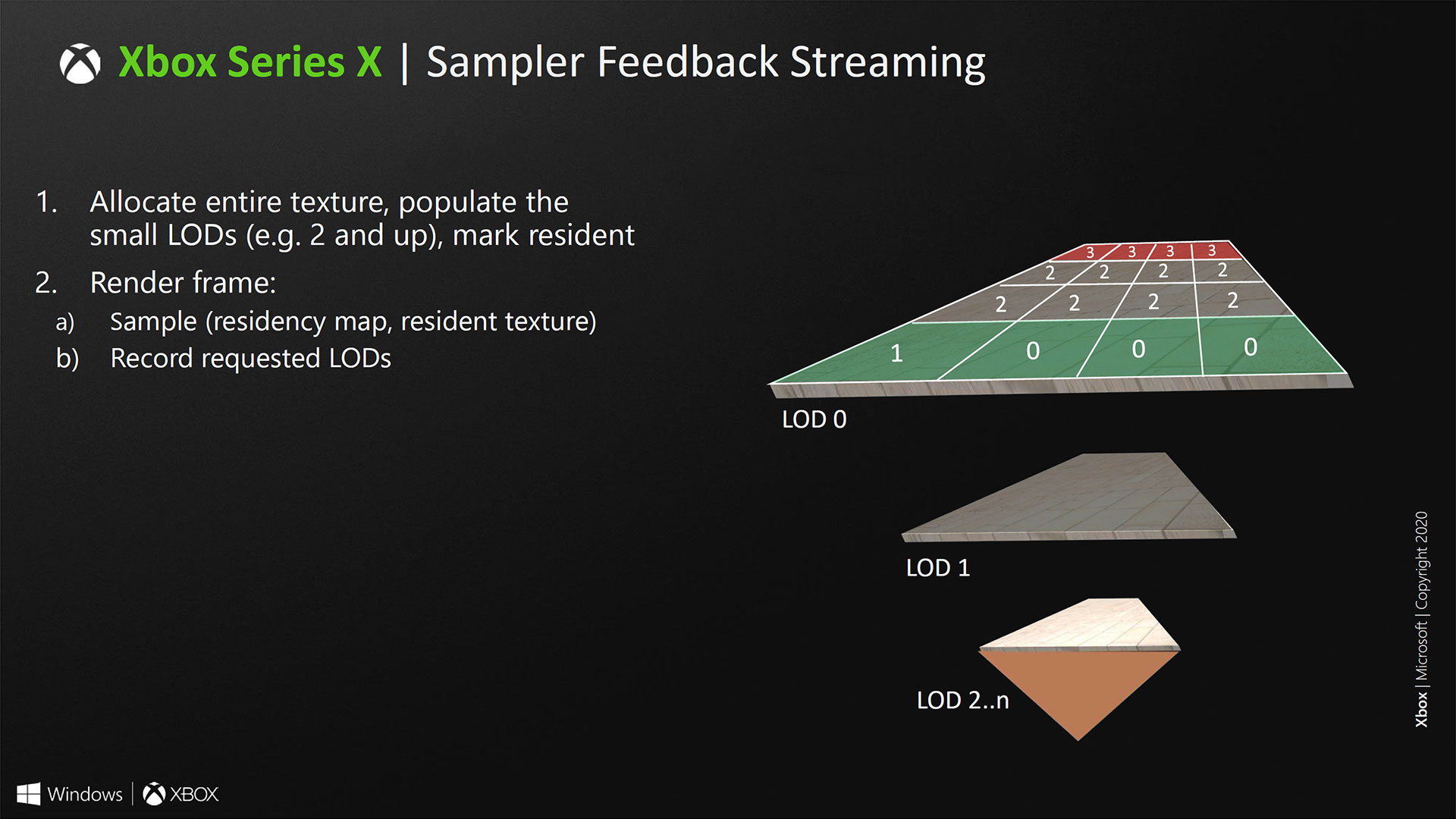

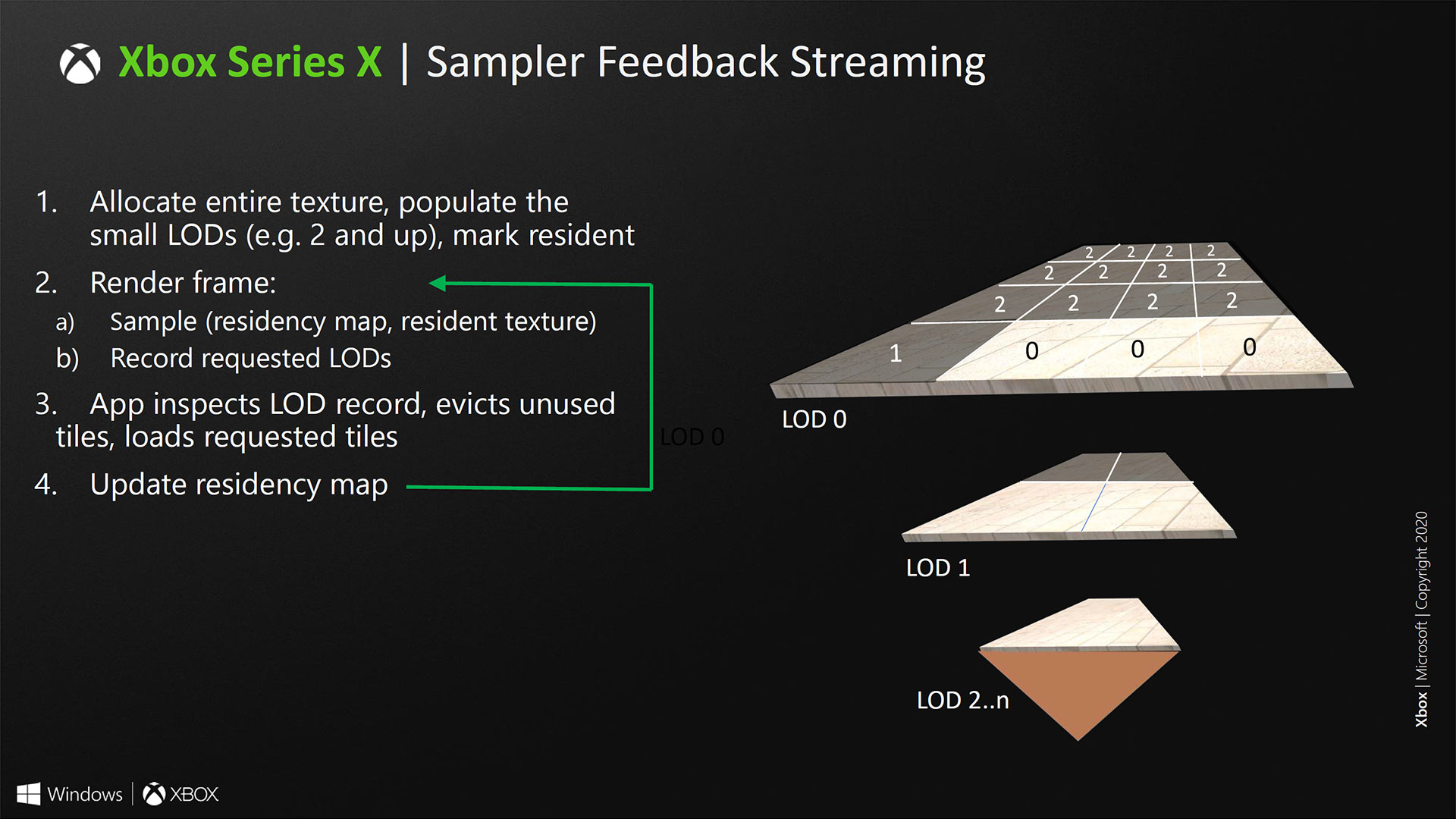
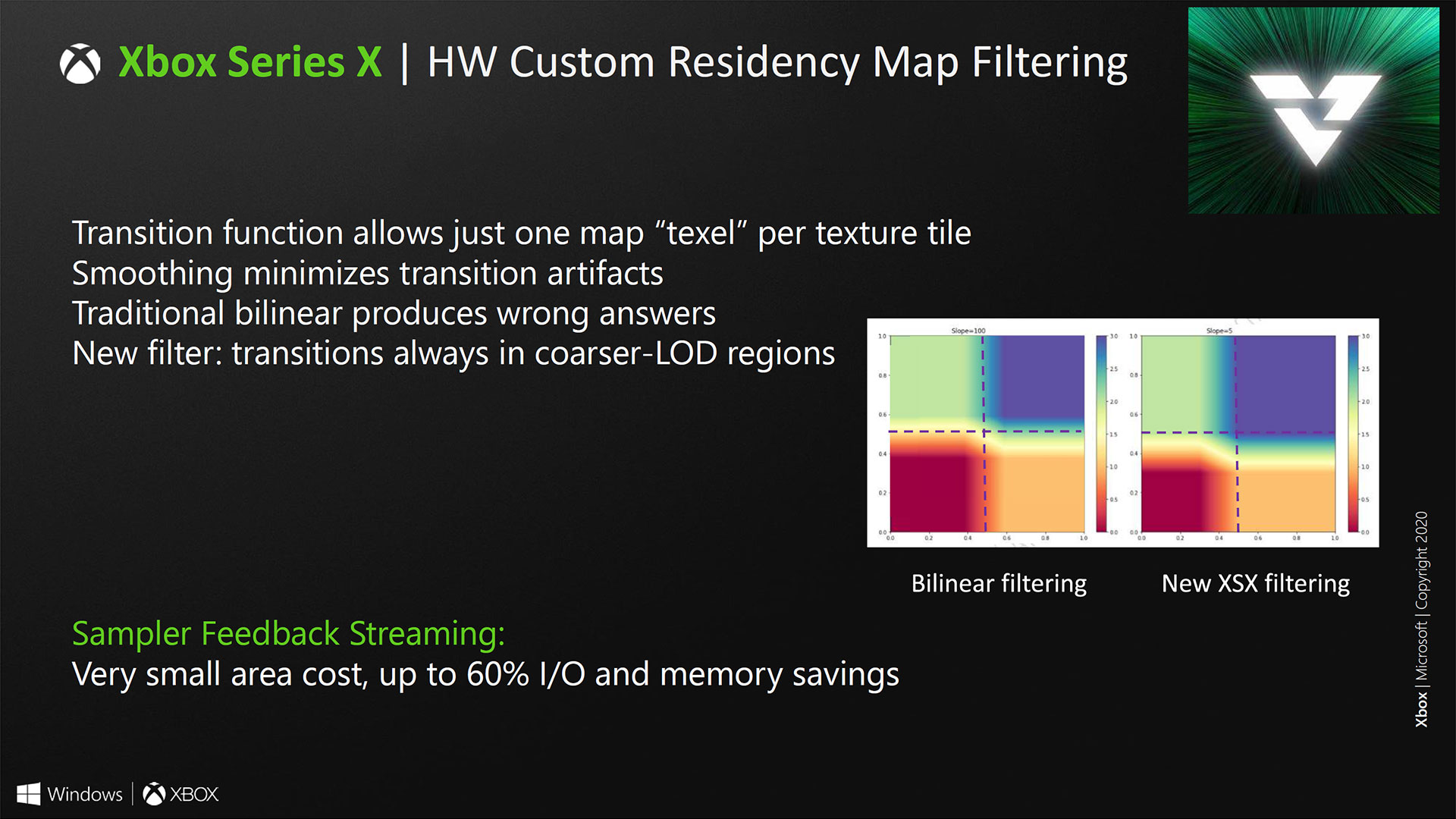





The presentation occurs at 7pm PT tonight, at which time we will update the article with more information from the live presentation.
Ongoing story: We're digging through the slides and will be updating this article with additional highlights.

Jarred Walton is a senior editor at Tom's Hardware focusing on everything GPU. He has been working as a tech journalist since 2004, writing for AnandTech, Maximum PC, and PC Gamer. From the first S3 Virge '3D decelerators' to today's GPUs, Jarred keeps up with all the latest graphics trends and is the one to ask about game performance.
-
Giroro If Microsoft has a working prototype, then they should put a disc in one and turn it on.Reply
This kind of detail is nice 6 months to a year from launch to fill time when they've finished the design and are sending it out for production. Not 11-15 weeks out when there's presumably millions of these things sitting in customs somewhere.
I'm not saying that Xbox Series X isn't real, but why haven't they actually done anything to prove its real? Prerendered trailers and sizzle-reels PC builds of games aren't good enough to show they have a working box that can be plugged into a tv and turned on. -
JarredWaltonGPU Reply
This is a Hot Chips presentation, where they focus on architectural stuff that software developers and hardware people alike may find useful / interesting. There are quite a few interesting presentations going on today, though obviously I'm biased toward the GPU stuff. I don't think there's any reason to think the Xbox Series X isn't real and shipping this year. It's a few months away now, production has to make a bunch to sell as soon as it launches, and they want to keep final hardware and testing under wraps. All typical of new consoles (and new CPU and GPU) launches.Giroro said:If Microsoft has a working prototype, then they should put a disc in one and turn it on.
This kind of detail is nice 6 months to a year from launch to fill time when they've finished the design and are sending it out for production. Not 11-15 weeks out when there's presumably millions of these things sitting in customs somewhere.
I'm not saying that Xbox Series X isn't real, but why haven't they actually done anything to prove its real? Prerendered trailers and sizzle-reels PC builds of games aren't good enough to show they have a working box that can be plugged into a tv and turned on. -
JamesSneed @GiroroReply
Not really something for Hot Chips as the audience is silicon engineers not consumers. -
BlakeShelton Reply
This is great news!!Admin said:Microsoft spills the fine-grained details on the new Xbox Series X at Hot Chips 2020.
Microsoft Xbox Series X Architecture Deep Dive at Hot Chips 2020 : Read more -
Giroro Reply
I understand that the purpose of the presentation and Hot Chips is about this kind of hardware detail, but what I'm saying is Xbox is well behind when this kind of detail is expected in the hardware release cycle. Even Sony was behind the normal cadence at their PS5 reveal event in June.JarredWaltonGPU said:This is a Hot Chips presentation, where they focus on architectural stuff that software developers and hardware people alike may find useful / interesting. There are quite a few interesting presentations going on today, though obviously I'm biased toward the GPU stuff. I don't think there's any reason to think the Xbox Series X isn't real and shipping this year. It's a few months away now, production has to make a bunch to sell as soon as it launches, and they want to keep final hardware and testing under wraps. All typical of new consoles (and new CPU and GPU) launches.
If Microsoft is still in the 'final hardware testing' phase, that is a really serious problem for them. Because they need to be in the "Launch quantities of hardware being loaded from overseas warehouses into ships, or already arrived at destination countries" phase. Shipping 3-5 million cotton swabs in 12 weeks is a major logistical challenge, let alone non-essential individually packaged game consoles.
I'm not saying Xbox Series X is going to be a paper launch... but why is it that every opportunity Microsoft has had to show a working console, they instead have pushed cross-gen compatibility and game streaming? -
Gillerer Replypetercoffin80 said:On the off chance that Microsoft has a working model, at that point they should place a plate in one and turn it on.
And run the risk of it crashing due to the system software not having bugs fully ironed out yet... :-/ Especially if it's just an off-chance they have hardware ready, the software probably isn't.
Again, these presentations aren't meant for the consumers but industry people and industry reporters. The circus numbers that consumers expect will be presented when the product is launched. -
Chung Leong ReplyGiroro said:If Microsoft has a working prototype, then they should put a disc in one and turn it on.
What would that prove? Game developers have devkits already. That Microsoft can make such a machine is not in doubt at all. The questions that remain are: (A) Can the console be made at the targeted cost? (B) Can enough be made to meet demand? (C) Does the case design allow proper cooling to ensure longevity? None of these would be answered by simply turning on a prototype. Or a production unit for that matter. -
Giroro Reply
Powering on a production unit would prove that the Xbox series X has entered production,that the production boards work, and that they haven't been missing critical development milestones. It proves that AMD's APU works as expected, and are in-hand in large quantities.Chung Leong said:What would that prove? Game developers have devkits already. That Microsoft can make such a machine is not in doubt at all. The questions that remain are: (A) Can the console be made at the targeted cost? (B) Can enough be made to meet demand? (C) Does the case design allow proper cooling to ensure longevity? None of these would be answered by simply turning on a prototype. Or a production unit for that matter.
There is no question that Microsoft can make this console, but is it ready? We know they know what the design looks like, people have had hands on with dummy hardware.
What is in doubt, is if Xbox (or PS5 for that matter) will launch this year at all. Everybody thinks Sony and MS are playing chicken on announcing price and release date because they want to win on pricing... Maybe they haven't announced price/release because one or both of them don't actually yet know what it costs to build one, or when they will be able to actually get it to market. Maybe both companies are just hoping that the other will announce a launch delay first.
Sure devkits are out there - but that doesn't mean much. Pre-launch they are unlikely to have the same hardware as the production units and developers have most likely been getting hardware updates as the design has progressed for the last year or two. The first wave of devkits probably went out before AMD had even finalized Navi and Zen2. I wouldn't be surprised if the first Xbox series X devkit was literally an Xbox One X with a SATA SSD and a sticky note on the side that read "like this, but better; maybe ray tracing".
For all I know, the current dev kits could still be pretty far off from production hardware. It really begs the question why the small amount of in-game footage released so far has been 'in-engine' running off of a PC.
Anyways, usually consoles don't need to go out of the way to show something so basic as 'it exists', but usually there are events like E3 before a console launch where there are dozens of demo kiosks set up for the media to photograph and play around with. So both Sony and Xbox very much need to go out of their way to communicate that message. Surely they have the ability to put some journalists into a hotel room with a console for an hour and let them check for smoke and mirrors. If not, why not?
Is it even worth it for Microsoft to launch Xbox Series X this year with cancelled holiday shopping and no exclusive launch titles? I cannot overemphasize how close we are to launch. In the before-times, September is the timeframe you would expect working demo kiosks to start popping up at brick&mortar retailers to drive preorders. -
ASSASSYN ReplyGiroro said:If Microsoft has a working prototype, then they should put a disc in one and turn it on.
This kind of detail is nice 6 months to a year from launch to fill time when they've finished the design and are sending it out for production. Not 11-15 weeks out when there's presumably millions of these things sitting in customs somewhere.
I'm not saying that Xbox Series X isn't real, but why haven't they actually done anything to prove its real? Prerendered trailers and sizzle-reels PC builds of games aren't good enough to show they have a working box that can be plugged into a tv and turned on.
Microsoft has had video of a functional series x for months now. It is sony who has utterly failed to show a powered on console operational.
S82YvCtwfHYView: https://youtu.be/S82YvCtwfHY -
cryoburner Reply
Microsoft already announced a week or so ago that the Series X was releasing in November (even if they didn't provide a precise date quite yet). And yeah, I suspect they don't want to provide pricing details well in advance only to have their competitor undercut them in some way. And we're still around three months from launch, so it's not like the hardware is on the verge of release or anything.Giroro said:What is in doubt, is if Xbox (or PS5 for that matter) will launch this year at all. Everybody thinks Sony and MS are playing chicken on announcing price and release date because they want to win on pricing... Maybe they haven't announced price/release because one or both of them don't actually yet know what it costs to build one, or when they will be able to actually get it to market. Maybe both companies are just hoping that the other will announce a launch delay first.
It was already rumored a while back that supplies of these consoles are expected to be relatively low this holiday season, so they may not want to start preorders too far in advance. They may also limit the initial regions where the hardware goes on sale initially, as has been common with console launches in the past.
Holiday shopping isn't "cancelled" by any means. In recent years, it's been moving more and more online, and getting spread out over a longer period, so crowded stores were already on their way to becoming a thing of the past. The pandemic will only serve to expedite that. People will still be buying consoles, but they'll be more likely to order them online. You can be fairly certain that both Microsoft and Sony will be selling practically all consoles they can manufacture this fall. As for demo kiosks in stores, it probably wouldn't be a great idea to have hundreds of strangers sharing a controller. And of course, it's still only August.Giroro said:Is it even worth it for Microsoft to launch Xbox Series X this year with cancelled holiday shopping and no exclusive launch titles? I cannot overemphasize how close we are to launch. In the before-times, September is the timeframe you would expect working demo kiosks to start popping up at brick&mortar retailers to drive preorders.
